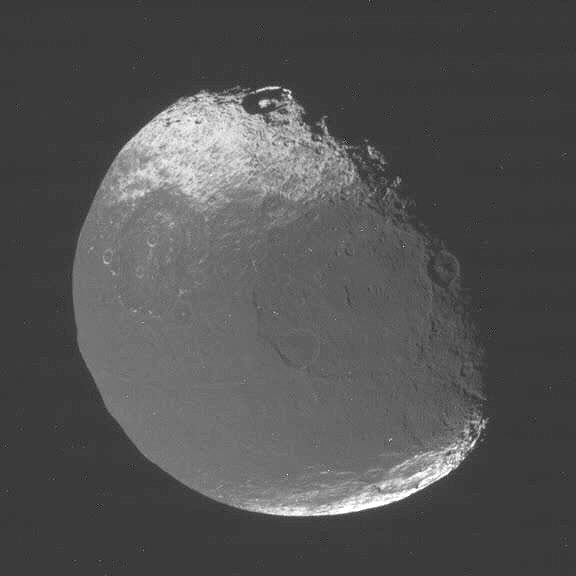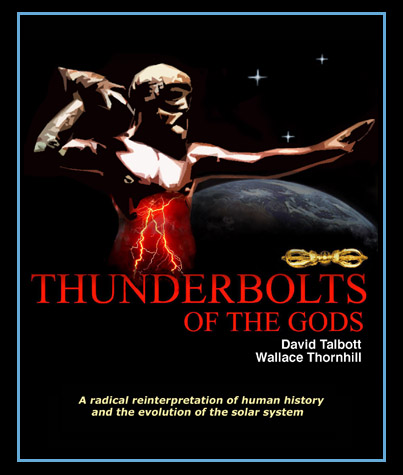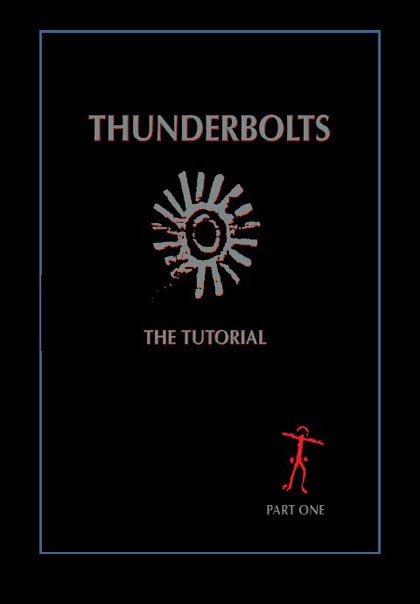
home •
about •
essential guide •
picture of the day •
thunderblogs •
news •
multimedia •
predictions •
products •
get involved •
contact

Credit: NASA/JPL/Space Science Institute
pic of the day
archive
subject index
abstract
archive
Links:
Society for
Interdisciplinary
Studies

Thunderbolts of the Gods is a
108 page 8-1/2 x 11 full color monograph based on the life work of the two
authors--a revolutionary synthesis of comparative mythology and the
newly-discovered "Electric Universe".

The Monograph includes
an hour-long DVD introducing various aspects of the Electric
Universe explained by members of the Thunderbolts Group.
Nov 29, 2005
Mesas with Moats
Most solid bodies in the solar system are pock marked with circular features that are heedlessly assumed to be “impact craters.” A more careful examination indicates that many of them are likely the result of electrical discharge activity.
In the Electric Universe most craters on celestial bodies are scars left by electrical discharges. Two or more filaments in a Birkeland current remove material from a surface as they rotate around the current’s axis. This action leaves a circular depression with steep walls. As the current varies, the depth of excavation will vary, often producing terraces along the walls.
Inflowing currents feeding the discharge will excavate channels, or rilles, in the surrounding surface. Electrical forces will pull debris toward the discharge. Where the electric field strength drops off rapidly at the periphery of the discharge, some debris will be left in a “pinched up” rim. Explosive effects will confuse this pinching-up morphology with ballistic ejection morphology. (Under certain circumstances, yet to be empirically determined, no debris is left, producing a rimless crater in an apparently otherwise undisturbed surface.)
If the rotating filaments don’t quite touch at the axis, they will leave a spire of relatively undisturbed material in the center of the crater—a “central peak.” If the filaments are more widely separated, especially where the surface is flat, they will leave a central mesa. In the case of widespread surrounding electrical activity that erodes the entire region, the outer walls may be removed, leaving a mesa surrounded by a shallow moat. Its circular form will attest to its electrical origin.
These circular mesas with moats are especially prominent in the highly eroded Arabia Terra region on Mars. Near the center of the linked image, several overlapping mesas with moats have cut into a larger mesa, producing a horseshoe shape. In the lower part of the image, there are several mesas with moats in the lower-elevation eroded terrain. But also there are several in the higher uneroded strata. The conventional explanation that attributes the erosion to water or wind would have the erosive agent jump from low ground to high and back, after removing a ring of material. While not a believable action for water or wind, it is a usual, even expected, action for electrical discharge.
In the Electric Universe, the same electrical agent acts on all bodies. So mesas with moats should be found on other bodies besides Mars.
The moons of Saturn provide several notable examples. The Odysseus crater on Tethys displays the form. (Another indication of the electrical generation of Odysseus is that the floor of the crater follows the curvature of the moon’s surface. The crater is not a hole that was blasted into the moon but a uniform layer of material that was lifted from the surface—in the shape of a ring.)
Saturn’s much smaller moon Iapetus also displays mesas with moats. In the image above, the two largest circular features in the dark region, although distorted by smaller craters, have central areas that appear to match the surface outside the features. A smaller crater on the terminator at the top of the image and another at the boundary of the dark region at the bottom of the image have central “peaks” that are considerably flattened. They are not mounds of rubble that rebounded from an impact but are circles of original surface untouched by a ring of electrical discharge machining.
EXECUTIVE EDITORS:
David Talbott, Wallace Thornhill
MANAGING EDITOR:
Mel Acheson
CONTRIBUTING EDITORS: Michael Armstrong, Dwardu Cardona, Ev Cochrane,
C.J. Ransom, Don Scott, Rens van der Sluijs, Ian Tresman
WEBMASTER: Michael Armstrong
Copyright 2005: thunderbolts.info